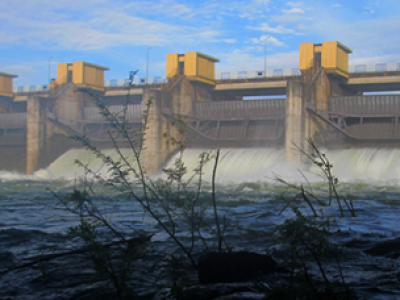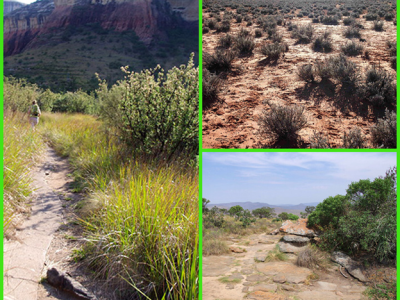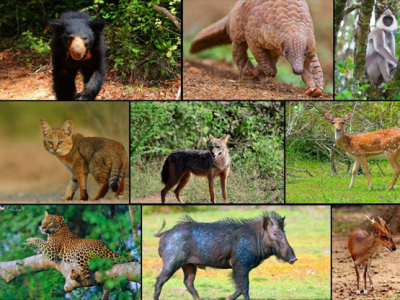Udawalawe National Park for Ultimate Wildlife Safaris
The diverse animal population of Udawalawe National Park in Sri Lanka has made it a tourist hotspot. Learn more about the park.
One of the richest sites to watch wild elephants is in Udawalawe National Park, which is surrounded by towering mountains on its northern border. It is one of the country’s top parks for watching wildlife and is mostly made up of grasslands and bush woods. You’ll have to travel around 103 miles (165 kilometers) to get to the park from the capital city of Colombo. Several species of aquatic birds and the Sri Lankan elephant call Udawalawe home. This park is the third most visited one in the country due to its popularity as a tourist destination.
There is a large elephant herd in the park, and visitors may get quite close to the magnificent animals. In fact, Udawalawe is the only place in the world where you are guaranteed to see elephants. But elephants aren’t the only animals that call this place
home. Even crocodiles, monkeys, peacocks, and a plethora of birds and deer are all found here.
Udawalawe National Park’s historical background
Udawalawe National Park straddles both the Sabaragamuwa and Uva provinces of Sri Lanka, serving as a natural boundary between the two. The park was established for the dual purposes of providing a safe haven for the wild animals that had to be relocated as a result of the construction of the Udawalawe Reservoir on the Walawe River and protecting the catchment area for the reservoir.
The reserve was formed on June 30, 1972, and it has a total area of 30,821 hectares (119 square miles). The land was utilized for shifting agriculture before its classification as a national park.

Physical characteristics of Udawalawe
Udawalawe marks the transition from the rainy to the dry zone in Sri Lanka. While plains make up the majority of the geography, there are nevertheless some hilly regions. The northern part of the park is home to the Kalthota Range and Diyawini Falls. On the other hand, the central areas of Bambaragala and Reminikotha are rocky outcrops.
As one of the largest parks on the island, Udawalawe National Park covers about 31,000 hectares. Scrubland and dry grassland are the two environmental types that are most often seen in Udawalawe. Trees and stretches of thick grass and brush are frequent sights in Udawalawe. At Udawalawe National Park, these are the environmental conditions that the elephants enjoy the most for a significant period of the year. Grasslands, scrublands, and other planes of a similar kind predominate in the park, although there are also plenty of rocky and hilly places.

Flora and fauna in Udawalawe National Park
Inhabitant Sri Lankan elephants have made Udawalawe National Park famous. Even on short safaris in Udawalawe National Park, it is common to witness herds congregating around waterholes for drinking and bathing. Seeing the around 600–700 Sri Lankan elephants (adults and youngsters alike) who call this wildlife park home is a once-in-a-lifetime opportunity.
The rusty-spotted cat, the fishing cat, and the Sri Lanka leopard are just a few of the native animals that call Udawalawe home. The park also has 5 kinds of mice, an Indian Bush Rat, and 3 kinds of mongooses, in addition to the abundant Golden Palm Civets.

The climate at Udawalawe National Park
You may expect hot temperatures year-round and rain only at certain times of year in the park’s climate. Precipitation averages about 1,500 millimeters per year in the southern half and climbs progressively as one travels north. There are no significant deviations from the yearly mean temperature of 32 °C.
April and May and October and November are the two wettest months of the year. The months of February and March enjoy a brief dry phase, whereas the months of May through September see an extended dry period.
When is the ideal time to go to Udawalawe, Sri Lanka?
While elephants can be seen at Udawalawe year-round. The best time to see migratory birds is from November through March. The dry season is ideal, since that’s when you’ll see the most elephants congregating around the watering holes.
How do I get to Udawalawe National Park?
The provincial lines of Sabaragamuwa and Uva meet at Udawalawe National Park. Specifically, it is located in the southwestern corner of the districts of Rathnapura and Monaragala. Nearly 165 kilometers separate Colombo from the park. In addition, the Thanamalwila-Udawalawe road only takes around 11 kilometers to reach the park’s entrance from the Udawalawe junction.
From Colombo, you may take a variety of routes to the Udawalawe National Park:
Air travel
The cost is higher than other options, but this is the shortest route. Colombo Airport flights will get you to Dickwella Airport, where a cab will transport you to the national park in about an hour. If you visit Sri Lanka for a short holiday, this would be the ideal transportation mode to save time on travel.
By Bus
To go to Udawalawe from Colombo, you’ll need to take a bus for about 5 or 6 hours. Taking a bus from Colombo to Monaragala is the best option. Finally, it concludes at the Udawalawe intersection.
By private transport
From Colombo, this is the most convenient and fastest method to go to Udawalawe National Park. It will take around 4 hours to reach the place by cab. Your tour operator can arrange for a chauffeured vehicle for a smooth experience. However, this means of transport can cost you a few more dollars. That being said, it’s much preferable to use public transportation if you are someone who gives top priority to comfort and safety.
Wrapping up
In the middle of the national park sits the massive Udawalawe Reservoir. In addition to elephants, leopards, and a wide variety of bird species, visitors may see them in Udawalawe. The park is home to approximately 10–12 leopards, making sightings very scarce. Photographers will love this location. If you are planning a vacation to Sri Lanka, you should definitely include a stop at Udawalawe National Park on your itinerary.


Customer
I was wondering if you ever considered changing the layout of your site? Its very well written; I love what youve got to say. But maybe you could a little more in the way of content so people could connect with it better. Youve got an awful lot of text for only having one or two images. Maybe you could space it out better?
Customer
This is the right site for anybody who wishes to find out about this topic. You realize so much its almost hard to argue with you (not that I actually would want toHaHa). You definitely put a new spin on a topic that has been written about for many years. Great stuff, just great!
Customer
I’d like to thank you for the efforts you have put in writing this website. I’m hoping to see the same high-grade blog posts from you in the future as well. In fact, your creative writing abilities has motivated me to get my very own blog now 😉
Customer
Excellent blog here! Also your website so much up fast! What host are you using? Can I am getting your associate link on your host? I desire my site loaded up as fast as yours lol
Customer
I couldn’t resist commenting. Well written!
Customer
Thanks for sharing your thoughts on %meta_keyword%. Regards
Customer
Thank you for the auspicious writeup. It actually was a amusement account it. Glance complex to far brought agreeable from you! By the way, how can we communicate?
Customer
Hello! I’ve been following your site for a long time now and finally got the bravery to go ahead and give you a shout out from Lubbock Tx! Just wanted to mention keep up the fantastic job!
Customer
I’m gone to say to my little brother, that he should also visit this webpage on regular basis to take updated from most up-to-date information.
Customer
Hi friends, good post and good arguments commented here, I am in fact enjoying by these.
Customer
Every weekend i used to visit this website, because i want enjoyment, since this this site conations in fact pleasant funny information too.
Customer
Heya! I just wanted to ask if you ever have any problems with hackers? My last blog (wordpress) was hacked and I ended up losing months of hard work due to no data backup. Do you have any solutions to prevent hackers?
Customer
Hi there, just wanted to say, I enjoyed this article. It was funny. Keep on posting!
Customer
I don’t even know the way I ended up here, however I assumed this publish used to be good. I don’t understand who you are however definitely you are going to a famous blogger if you are not already. Cheers!
Customer
Howdy great blog! Does running a blog similar to this take a great deal of work? I have very little knowledge of programming but I was hoping to start my own blog soon. Anyway, if you have any recommendations or tips for new blog owners please share. I know this is off topic but I just had to ask. Thank you!
Customer
What’s Happening i’m new to this, I stumbled upon this I have found It positively helpful and it has helped me out loads. I am hoping to give a contribution & aid other users like its helped me. Good job.
Customer
Remarkable things here. I’m very glad to see your article. Thank you so much and I’m looking forward to touch you. Will you please drop me a mail?
Customer
wonderful post, very informative. I’m wondering why the other experts of this sector do not understand this. You should continue your writing. I am sure, you have a huge readers’ base already!
Customer
Thanks for sharing such a nice idea, article is pleasant, thats why i have read it fully
Customer
Appreciate the recommendation. Will try it out.
Customer
Thank you a bunch for sharing this with all people you really realize what you are talking approximately! Bookmarked. Please also seek advice from my site =). We could have a link exchange agreement among us
Customer
hey there and thank you for your information I’ve definitely picked up anything new from right here. I did however expertise a few technical issues using this web site, since I experienced to reload the site many times previous to I could get it to load properly. I had been wondering if your web hosting is OK? Not that I am complaining, but sluggish loading instances times will very frequently affect your placement in google and can damage your quality score if advertising and marketing with Adwords. Anyway I’m adding this RSS to my e-mail and can look out for a lot more of your respective fascinating content. Make sure you update this again soon.
Customer
This means buying adequate clothing, camping gear and waterproof wellies.